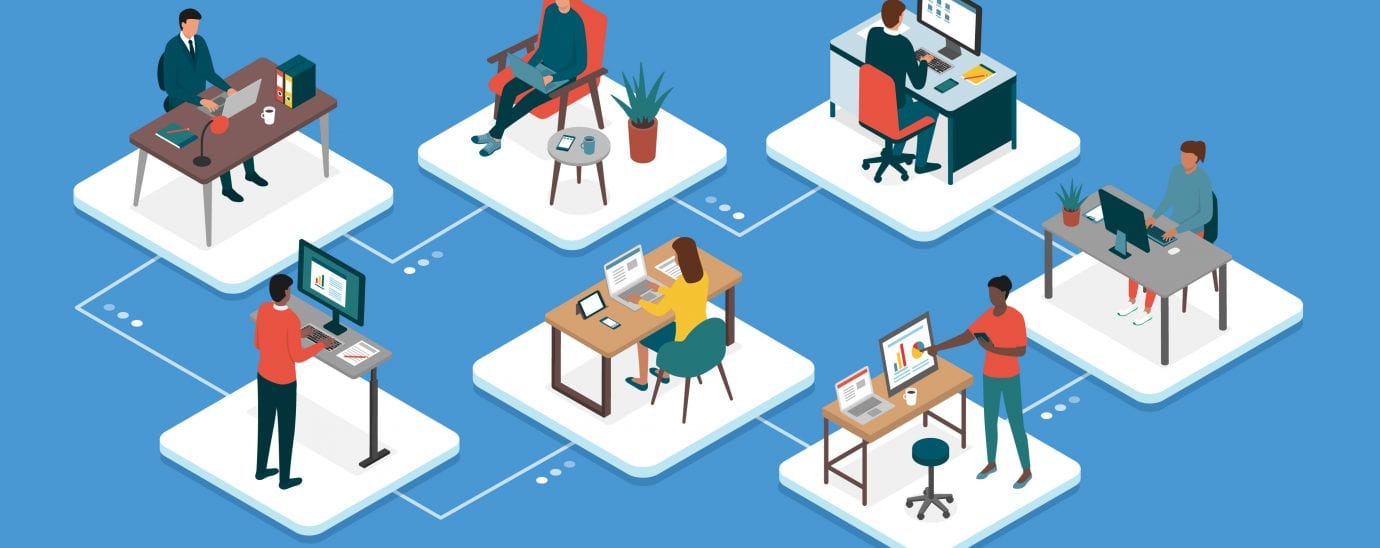Making the transition to hybrid working

Judopay CEO Jeremy Nicholds takes a closer look at the value of hybrid working in a post-lockdown world, and how businesses can embrace it.
From our experience, there is no operational challenge that stems from having employees working from home that cannot be solved with communication, teamwork and technology.
At the time of writing, it looks as though lockdown restrictions in the UK will be lifted on July 19th, and one of the many restrictions that will be lifted is on gathering in offices. After over a year we will be able to return to our desks and watercoolers.
However, not everyone is happy about returning to work. Those with long commutes may well once again be subjected to a heavy psychological toll, along with the extra time and uncompensated expense of travelling. Employees who find it difficult to concentrate in busy environments could suffer from reduced productivity, those who bought expensive equipment to make their home working environment more conducive to working will be out of pocket and productivity could well go down. Working from home’s effect on overall productivity is so good that it will boost the USA’s overall productivity by 5% in the years following the pandemic.
Working from home also has its critics, with some complaining that what looks like productivity is in fact just employees working more as the barriers between work and home life erode. Others cite the ‘informal networks’ that develop in offices as a benefit that is lost when our work-social lives are conducted over Zoom, though it is possible that as working from home becomes more common we will get better at incorporating aspects of work that normally only happen face-to-face into working from home.
Whatever your own opinion, there are likely to be people in your office who love home working and those that hate it. Some will work better at home and others will have their productivity fall. Prior to the pandemic in most offices there was a one-size-fits-all approach to working: you travel each day to a building, sit down at a desk and work for a set amount of time. The experience that companies and their employees have had of working from home is a bell that cannot be un-rung – once you know that you can work as well or better at home the office stops seeming like the only answer for how a business can operate.
It seems likely that most companies with desk-based work will operate a hybrid model going forward, with some days in the office and some at home. With this in mind, how can companies and employees ensure that hybrid working works for them in the long term?
Hitting the wall
Everyone experiences a surge of productivity when starting a new job, transferring to a new department or, as is the case with home working, when their working situation changes dramatically. By now this effect has likely long abated and without careful attention, your home-working employees could be building up bad habits that blunt their possible productivity gains.
Monitoring them through software is of course time-consuming and likely to obliterate your company’s morale. A better idea would be to first identify if there has actually been a drop in the quality and quantity of a given employee’s work between the start of the pandemic and today – plenty of employees are already skilled at monitoring themselves and adjusting their behaviour. Others may need adaptations to their workspace, their processes or even to be asked to return to the office on a more permanent basis if their job really cannot be done from home.
Collaboration tools
When your staff are moving from one space to another day by day it can be difficult for them to keep track of tasks or to collaborate with other employees effectively. If this is a problem, then it is likely because employees are keeping task lists in their heads, on paper or on their own productivity apps and conducting collaboration over whatever medium is most convenient at the time – face to face, the phone, emails and video calls.
If you have not already, it could be time to move to a tool that makes communication and collaboration much more centralised, such as Microsoft’s Teams platform or even free tools like Asana. The process of hybrid working is going to be disruptive for everyone and keeping your tasks and collaboration in one place can reduce this.
Make the office a second home
Although some home workers work from kitchen tables and sofas, most home workers do so from comfortable seats, with a professional desk and all of their home amenities at their fingertips. Given this and how some workers are ‘filled with dread’ by the prospect of having to commute again, there has to be a compelling reason to come into the office beyond being told to by management.
Spend some time and money to make the office a home away from home. Upgrade coffee machines, provide a selection of teas, perhaps even go as far as create spaces for employees to socialise and cook food together to increase the homely atmosphere.
- How to successfully reopen your office in a post-Covid-19 world
- Founder Feature: Neil Purcell, founder and CEO, Talent Works
- Ensuring a secure digital transformation journey
- Build these five habits to reduce the risk of ransomware
Your employees will be having varied reactions to a return to work, whether they voice these opinions or not. Some may have had a great time during the past year, others may have hated it and could even be demonstrating symptoms of clinical depression. For some employees, the prospect of hybrid working will be difficult, for others much-needed relief from social isolation and a lack of boundaries between home and work. There will not be a single solution that will satisfy everyone, but if companies pay attention to individuals and provide the support that they need then they can manage the transition.
For more news from Top Business Tech, don’t forget to subscribe to our daily bulletin!
